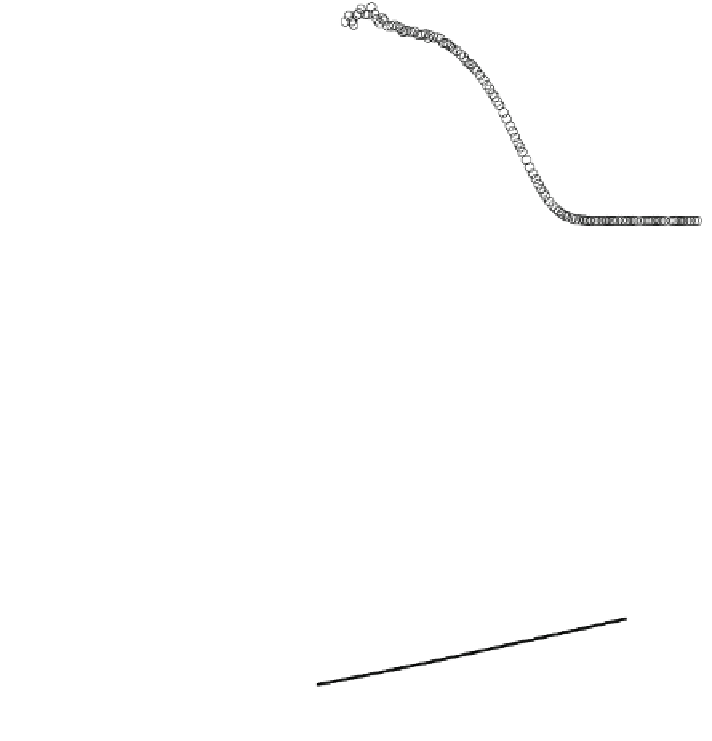Environmental Engineering Reference
In-Depth Information
Fig. 18 Correlation function
of the scattered light for the
12 vol% water in FC-72
nanoemulsion fluids.
Measurements taken by a
Photocor-Complex DLS
instrument [
15
]
0.4
Water-in-FC72
T=25
o
C
0.3
0.2
0.1
0
10
-7
10
-6
10
-5
0.0001
0.001
0.01
Delay Time (s)
Fig. 19 Relative thermal
conductivity of FC-72
nanoemulsion fluids versus
water volume concentration.
The effective thermal
conductivity estimated from
the effective medium theory
for spherical particles is
shown for comparison [
15
]
Weight Fraction (%)
0
1
2
3
4
5
6
7
8
100
Experiment
Effective Medium Theory
80
Water-in-FC72
60
40
G=65 MW/m
2
K
20
15 M
W/m
2
K
0
0
5
10
15
Volume Fraction (%)
When the water nanodroplets do not undergo solid-liquid phase change, the
specific heat of the water in FC-72 nanoemulsion fluids follows the simple mixture
rule:
C
nanoemulsion
¼ 1
ffi
U
ð
Þ
c
oil
þ
UC
water
ð
10
Þ
where U represents the concentration of the ''water'' phase. The specific heat of
the pure FC-72 and water in FC-72 nanoemulsion fluids are measured using a
Differential Scanning Calorimetry (DSC). The specific heat of FC-72 and water-in-
FC-72 nanoemulsion fluids is measured using a TA-CC100 DSC. The measured
and calculated heat capacities of the water in FC-72 nanoemulsion fluids are



















































































Search WWH ::

Custom Search